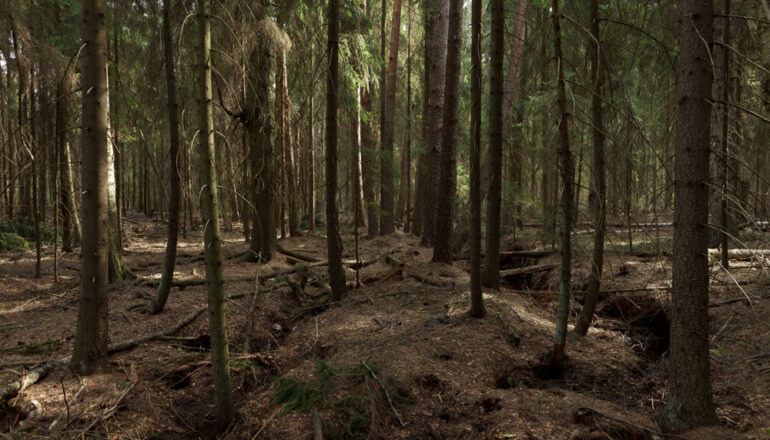Our touring season ended in October and now it’s a good time to make some conclusions and write a bit more about our Alutaguse Bear Forest project.
In 2019, 177 persons traveled with Natourest and stayed in Estonia for about a week. Some stayed for longer, some for a shorter period. While most of the visitors came for a guided tour, directly through us through our partners, there were also over 20 persons who made a self-guided tour.
More than half of the people came from Germany, flying in from Frankfurt, Berlin, Munich and also coming with a ferry to Helsinki and from there to Tallinn. So it’s difficult to calculate exactly how much distance everyone covers with a plane or other vehicle. But we wanted to know if the piece of land and forest we have in Alutaguse (the land surrounding our Brown Bear hide), is enough to compensate for the CO2 emitted through the flights of our clients?
To make some kind of calculations, I chose Amsterdam as the starting point for all the travelers. One round-trip (Amsterdam-Tallinn) for one person produces about 0,552 tons of CO2. This calculation is made according to: https://co2.myclimate.org/en/flight_calculators/new
If all our clients (177) flew in from Amsterdam, it would mean they would altogether produce 97,704 tons of CO2.
Natourest owns 86,2 hectares of land, out of which 72,7 hectares is covered with forest. As most of the forest is still relatively young, the annual growth is 351 solid cubic meters (SCB) or 4-6 SCB per hectare.
In our forest, we have many different tree species – Norweigan Spruce, Silver Birch, European Aspen, Oak, Black- and Grey Alder, different willows and other species. To make some more general calculations, I chose Norweigan Spruce as the exemplary species as it’s probably the most numerous species in the area. It’s said that 1 SCB of a growing Norweigan Spruce has the moisture content of 53% (1). A freshly felled spruce tree is said to weight about 860 kg/SCM. The average dry-weight is said to be 405 kg.
The calculations for CO2 sequestered SCM (kg) =
Tree mass (tons of fresh biomass) x 65% (dry mass) x 50% (carbon %) x 3.67 x 120%
Some generalizations:
• 35% of the green mass of a tree is water so 65% is solid dry mass;
• 50% of the dry mass of a tree is carbon;
• 20% of tree biomass is below ground level in roots so a multiplication factor of 120%
is used; and
• To determine the equivalent amount of carbon dioxide, the carbon figure is multiplied
by a factor of 3.67.
So the calculation in our case would be: 0,86 x 65% x 50% x 3.67 x 120%= 1230, 918 kg or 1,23 tons of CO2/SCM
This means that in one year, our forest can offset = 1,23 x 351 = 431, 73 tons of CO2
431,73 t/CO2 means that our forest could actually offset the flight emissions of 782 potential clients and easily covering the 177 touring clients we had in 2019. For 2020, we plan a growth of 10%, which means, we hope to have at least 195 clients. Many of our partners also automatically offset the flights of our common clients, so people can feel secure that if they tour in Estonia with NaTourEst or with some of our partners, your flight emissions will be offset and even more.
Due to the relatively young age of our forest, the yearly growth of SCB is still growing in the future until it slows down again.
But we won’t stop here. Starting from the beginning of 2020, we will put 5€ from every visit to the Brown Bear hide into a fund, which we will use for buying more land and taking it under protection. More info about the fund will be published soon.
You can read more about our conservation efforts from here.
Some of the numbers in a chart:
| Cadastre | Total area/ha | Forest area/ha | Annual growth /SCM | Annual growth SCM/ha |
| Kuivassaare | 28,3 | 25 | 154 | 6 |
| Lainemäe | 20 | 15,9 | 67 | 4 |
| Sillaotsa | 37,9 | 31,8 | 130 | 4 |

